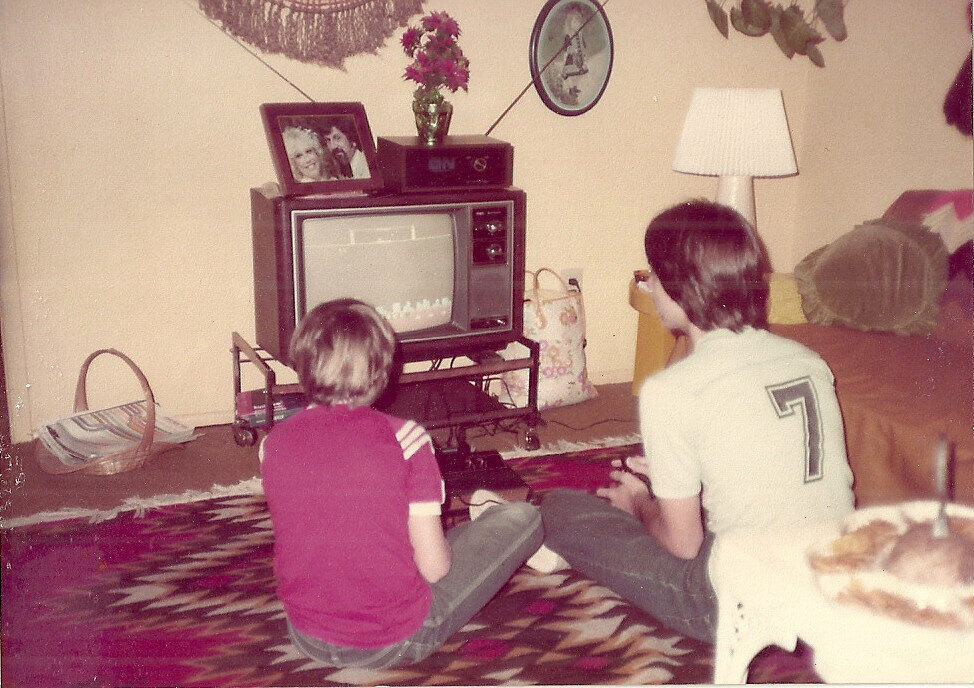
Occasionally I worry that our collective memory of home video games sees the release of the Nintendo Entertainment System as the true beginning. Talk to people about games like Super Mario Bros., The Legend of Zelda, and Metroid, and they still light up with excitement, appreciating the tremendous importance of these games in the grand scheme of gaming's evolution as a medium. And it makes sense, of course. Even those who aren't old enough to remember these games from their heyday understand what Nintendo is, since it's a force that has continued to loom large in gaming in the decades since. There's nothing really keeping the legacy of what preceded Nintendo alive in the current gaming marketplace, but a look back at video game history that begins with the NES is as incomplete as a look back at the history of cinema that ignores the great innovators of the silent film era.
ARTICLE SOURCE: GAMESPOT by Carolyn Petit
The great video game crash that preceded the release of the NES served as a kind of reset button on the industry. The crash was inevitable; the industry had grown so unhealthy that it needed to collapse so that a new, stronger foundation could be built. But, this being Video Game History Month, a time when we try to appreciate how gaming's past has shaped its present, it's important to remember that Atari had made video games a household activity first, and that there's so much to celebrate about the first massively successful home console.
I was born at the perfect time to grow up as games grew up, and the Atari 2600 is where my love of gaming began. Here are some things about the Atari era that to this day remind me of why I became so passionate about games in the first place.
Box art
This may seem like a strange place to start, but for me, the box art of many Atari games is central to my memories of those games. The 2600 wasn't capable of rendering detailed graphics, but that didn't stop the games I played on it from whisking me away to fantasy realms or to the depths of space. It wasn't the chunky visuals of the games themselves that did it, though. It was the wonderful art on the game's boxes, conjuring images in my mind that replaced the little square in Adventure with a brave hero, and turned Super Breakout from a simple block-breaking game into a tale of astronauts trapped in space by a cosmic force that was beyond their understanding. Box art was more important in the Atari era than it has ever been since; games no longer need to rely on the images on their covers to communicate to players what the graphics represent. But I also think that box art has never been as consistently beautiful as it was back then, and sometimes I miss the way that my imagination was called upon to flesh out the worlds of video games.
Gaming for everyone
As an arcade company, Atari marketed its coin-op machines squarely at men. But when trying to gain a foothold in the living room, the company took a different approach, often framing games as an activity that the whole family could enjoy together. Promotional materials for the 2600 often depicted parents and children playing games together, and one classic commercial has a young boy playing Berzerk with his grandmother. In my household, gaming was definitely an activity anyone could partake in, regardless of age or gender. Passing the controller back and forth to try to pass a stage in Donkey Kong or Miner 2049er was a family tradition. And we enjoyed competing with each other as much as we enjoyed cooperating, especially in thrilling four-player matches of Warlords. During the NES era, gaming started to become increasingly seen as a pastime primarily for young boys. I'm glad that Atari was there first to cement my view of it as an activity that could bring people together, something that just about anyone could enjoy and participate in.
The games
And then, of course, there were the games themselves. I often see echoes of games I first encountered on the Atari in games I play today. Spelunky is a far more complex adventure than anything the Atari 2600 could have handled, but I can never delve into its mines and grab shining gold bars without recalling the excitement I felt as Pitfall Harry, venturing into deadly jungles in search of treasure. One of my favorite games of last year, Resogun, owes a great deal to Defender, an innovative and challenging space shooter that debuted in arcades but that I first played on the 2600. And while I recently wrote about my fondness for TIE Fighter, it's the Atari 2600's Star Raiders, an incredibly complex and ambitious game for its time, that first thrilled me with the feeling that I was making hyperspace jumps and blasting enemy starfighters to smithereens.

